Last year, we saw a 15% increase in marketers using ABM. As marketing teams dedicate more budget and resources to ABM efforts, many are drawn towards ABM platforms that tout convenience, quick launch times, and incredible ad impressions. However, there’s a big problem that’s often hidden beneath the allure: programmatic ad fraud.
Global losses to ad fraud were $35 billion in 2020 and according to the World Federation of Advertisers, that number is expected to grow to $50 billion by 2025.
These numbers should be concerning to any marketer—especially if you’ve been hands-off with your programmatic ad strategy and execution. Here, we explain what ad fraud looks like, why it happens, and the steps your team can take to avoid it.
- What is Programmatic Advertising?
- Types of Programmatic Ad Campaigns
- How Do ABM Platforms Execute Programmatic Advertising?
- The Glaring Issue With ABM Platforms: Programmatic Ad Fraud
- Why Does Ad Fraud Happen?
- How Can Evidence of Ad Fraud Be Discovered?
- Steps You Can Take to Prevent Programmatic Ad Fraud
- Go straight to the DSP yourself
- Learn more about the best ABM tactics for your B2B business
What is Programmatic Advertising?
Before we dive in, let’s define what programmatic advertising is.
With the help of automation, programmatic advertising allows companies to dynamically serve ads depending on who is viewing the ad.
The “how” behind programmatic advertising can get rather technical but to sum it up neatly, there are Demand Side Platforms (DSP) and Supply Side Platforms (SSP) that communicate with each other to bid on ads in real-time. Advertisers and marketers use the DSP to bid on and manage digital ad spaces. Publishers use SSP (like Google Ad Manager or Sharethrough) to manage ad inventory, sell ad space, and collect revenue.
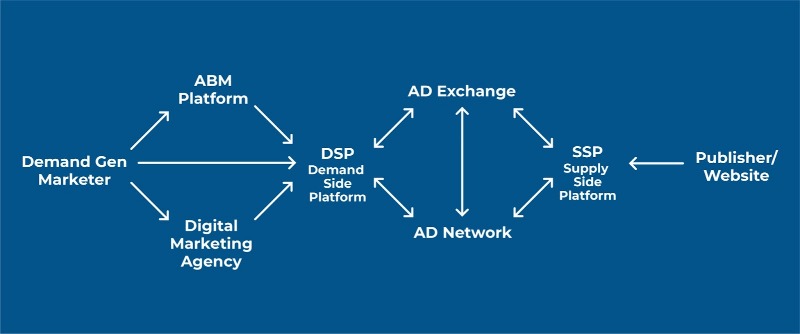
For marketers, the benefits of programmatic advertising with a DSP are that you can manage all digital ads through one platform, optimize ads in real time, and serve more personalized ads.
Types of Programmatic Ad Campaigns
Programmatic ad campaigns can be categorized into two main types: direct programmatic advertising and real-time bidding (RTB).
- Direct programmatic advertising: In this approach, advertisers directly purchase a specific number of ad impressions from publishers without involving other ad exchange parties. It allows for more control over ad placements and targeting.
- Real-time bidding (RTB): RTB is an automated process where advertisers bid in real-time for ad space, and the highest bidder’s banner is displayed on the publisher’s website. RTB campaigns can benefit from pre-bid solutions that set rules for bidding and improve brand safety by blocking unsuitable ad placements.
Overall, programmatic advertising is gaining popularity as more customers spend time online, and businesses must choose the type of programmatic campaign that aligns with their specific advertising goals and objectives.
How Do ABM Platforms Execute Programmatic Advertising?
Programmatic advertising when done well makes sense: you serve your ads to relevant audiences and can optimize your ad parameters as you go in real time. However, the process can seem intimidating for many marketers—especially for small to midsize teams who don’t have the resources or bandwidth to learn how to make the most of programmatic advertising.
This is where ABM platforms emerged to provide an easier solution that would supposedly allow marketers to set their programmatic ads on autopilot. Rather than marketers having to figure out how to use a DSP on their own, ABM platforms act as the middleman between advertisers (you and your marketing team) and DSPs.
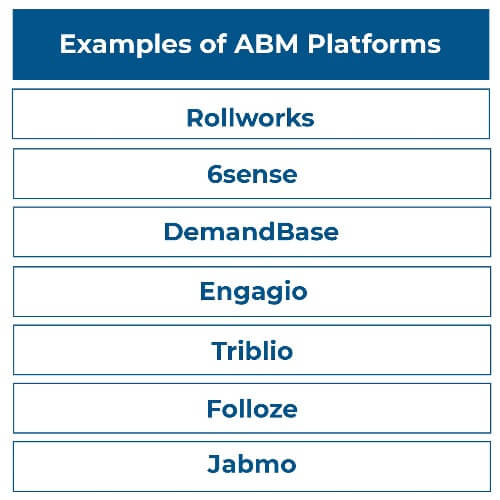
Their pitch is that they’ve created a way that makes it easy for marketers to implement programmatic advertising. And while the hands-off approach is easier, marketers end up trading accuracy and precision (which are key factors for programmatic ads and ABM success) for ease of use.
Additionally, the controls marketers have in ABM platforms tend to be minimal. This means it’s harder to serve ads to the right target audiences and to prevent and minimize ad fraud from happening.
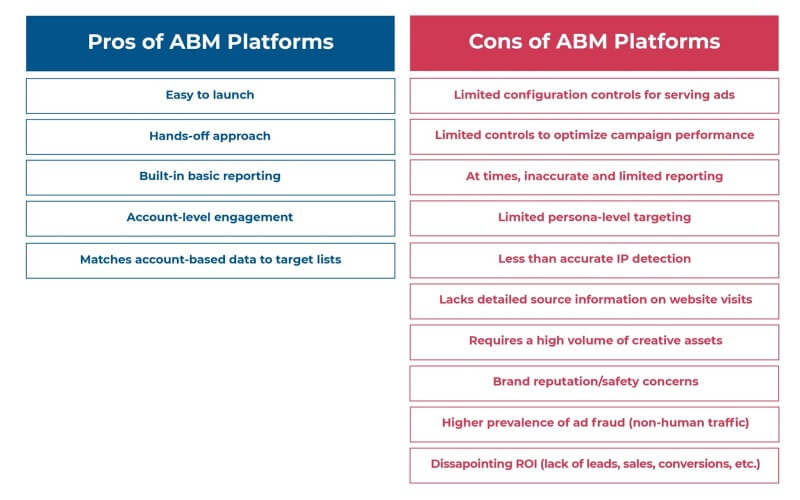
With limited controls and visibility, marketers become reliant on the ABM platform to deliver on their promises. The big question is, how often does that actually happen?
The Glaring Issue With ABM Platforms: Programmatic Ad Fraud
Historically, ad reach has been a key benchmark for success. Some ABM platforms and even some ad agencies will leverage that, promising extraordinary ad impressions and reach. However, there’s usually an underlying issue that overinflates these numbers: programmatic ad fraud.
Programmatic ad fraud is when ads are intentionally misrepresented, have little chance of being seen, or experience non-human (bot) traffic.
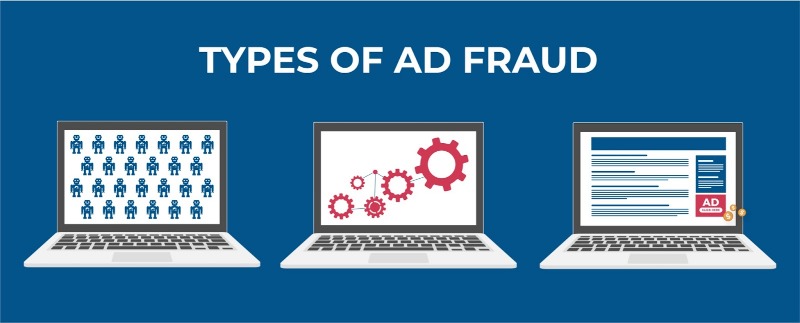
Types of Ad Fraud
There are many types of ad fraud that can happen and provide marketers with a false representation of ad impressions and overall campaign performance. Below are a few common examples of programmatic ad fraud, but keep in mind that this isn’t an exhaustive list. Ad fraud is rampant, and scammers may continue to find new ways to commit ad fraud.
- Click spamming: Scammers may use bots or click farms to generate fake ad clicks. On reports, it’ll look like you’re getting a lot of ad clicks, but in reality, a large percentage isn’t coming from potential buyers. Similarly, fraudsters can also send bot traffic to drive fake ad impressions.
- Ad stacking: This is a fraudulent tactic that involves stacking multiple ads on top of each other, where only the top ad is actually viewable. The hidden ads underneath will still register as an impression even though web visitors cannot physically see the ad.
- Pixel stuffing: With this method, an ad is displayed in a format that’s invisible to the user with a tracking pixel hidden on the page. When people visit the web page, the pixel will track an impression, but the actual ad is invisible to the user—so the impression is misrepresented.
Why Does Ad Fraud Happen?
Many well-meaning marketers trust the ABM platforms they use for programmatic advertising and don’t realize what’s actually happening. They see great ad impressions and traffic—the numbers they’re being pressured to deliver on—and want to believe that the platform they’re using is staying true to their word.
The sad truth is that many ABM platforms and ad agencies have little incentive to try to prevent ad fraud. Whether ad impressions or clicks are genuine or fake, they make money as long as their clients have some perceived value from the ad campaigns. There’s really no reason for them to dig into the clicks and impressions or to take measures to prevent any potential fraud. In fact, they may even feel that they risk losing business by delivering fewer impressions and clicks, even if they are of higher quality than larger campaigns generating lots of empty clicks and impressions.
As a result, it’s easier and more profitable for these platforms and agencies to stay quiet. It’s up to marketers to realize that quality is greater than quantity, take initiative in their ad spend and strategy, and demand answers from vendors.
How Can Evidence of Ad Fraud Be Discovered?
The primary method of discovering whether or not ad fraud exists is with an analytics tool such as Google Analytics or Adobe Analytics. Often, you will find user behavior in your ad campaigns that is very unusual compared to other digital traffic channels, such as organic search. For example, in one test, we saw that almost 100% of the users with the same internet service provider would display almost identical behavior once reaching the website:
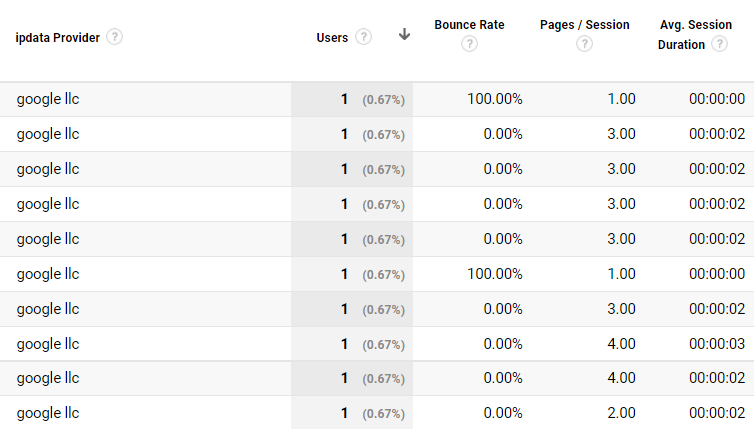
In the above example, we could see that the majority of users on this network would reach the campaign’s landing page and then either bounce immediately or refresh the page anywhere from one to three times within a few seconds and then exit the website. We could tell that the users were refreshing the same page because the second and third pages of these sessions were identical to the first.
In another test, we created a Goal in Google Analytics that would trigger whenever a user reached the landing page for a few seconds. Typically, Goals are reserved for conversion actions such as forms:

Out of the 273 users above, all of whom were on Desktop, only nine actually triggered the Analytics Goal. With any other traffic source, this would almost never happen. When you observe behavior like this from your ads, it makes you wonder what type of users could possibly consistently display such behavior, but it’s more likely that they’re simply not real users at all.
Steps You Can Take to Prevent Programmatic Ad Fraud
Realizing that you’ve fallen victim to ad fraud can be demoralizing—especially if you’ve realized that thousands, or even hundreds of thousands, of your marketing budget dollars have gone to waste due to ad fraud. Not all hope is lost, though. There are several steps you can take to prevent falling victim to programmatic ad fraud.
Analyze the budget with quality versus quantity in mind
Fraudsters will continue to take advantage of marketers’ historic obsession with reach as long as we continue prioritizing quantity. When you look at the numbers, consider how many visitors and contacts actually turn into leads. How many qualified leads are you actually getting out of your ads? When you stay laser-focused on quality over quantity, it becomes easier to suss out instances of ad fraud.
Go straight to the DSP yourself
Instead of relying on ABM platforms to do all the work for you, go straight to the DSP instead. This will give you more visibility and control of your ad campaigns.
In an ABM platform, your access to features and functionality that can help reduce wasted ad spend is very limited. Once you have direct access to the DSP, there are several various features and integrations that can be implemented to reduce bids on impressions that are likely fraudulent. This depends on the DSP, but can include features such as brand protection and pre-bid blocking.
Aside from these, there are other tactics you can employ that will help improve the quality of your ad traffic. Here are some examples:
- Segmenting your traffic by source (referring domains, ad networks, etc.) and then excluding, or blacklisting, those that display higher amounts of questionable traffic
- Whitelisting domains that typically generate higher-quality traffic
- Blocking ads from serving on mobile devices (this works particularly well for B2B companies since most leads are generated on Desktop)
Prioritize data accuracy, freshness, and comprehensiveness
High-quality data is everything in ABM, yet Demandbase’s 2020 ABM Market Research Study reports that high-quality data is the biggest challenge for marketers. Your programmatic ad campaigns will only be more successful when it’s fueled by accurate data.
DealSignal’s ABM Effectiveness solution can help you assess your Total Addressable Market, discover new accounts and contacts, and provide you with the precision targeting criteria you need to successfully launch ad campaigns.
“Now that we have DealSignal enriching our SFDC deployment with fresh accurate data, we can confidently take a highly-personalized approach to ABM—and it’s having a positive impact at every level,” said Jeremy Middleton, Director of Revenue Operations & Digital Marketing at Pramata.
“Our email open rates have doubled, click rates have quadrupled, and we’re seeing a 4x lift in sales conversions.”
The key here is that the increase in clicks has actually led to greater sales conversions, meaning the quality of leads coming in from ABM ad efforts is high. Working with a foundation of good data will help you run more cost-effective ads and scale your ABM efforts efficiently. To learn more about how ABM Effectiveness can help your team, you can request a free demo here.
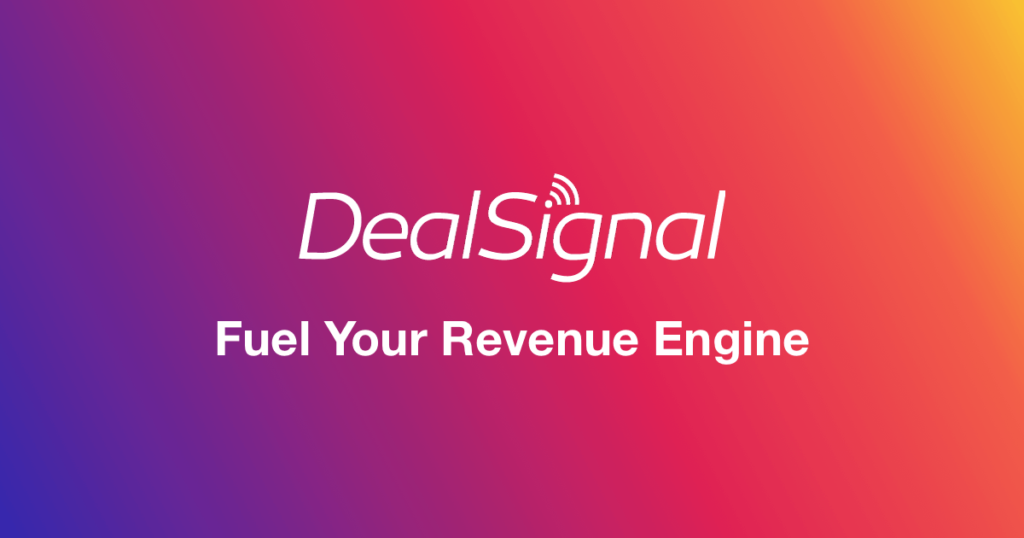
Vibrant On-Demand B2B Data. Transparent Pricing. Unparalleled Customer Support. Trust DealSignal to Deliver.
Learn more about the best ABM tactics for your B2B business
- The Secret Sauce of ABM Success
- How Intent-based ABM Helps Optimize Your Go-To-Market Strategy
- Account-Based Marketing Strategies: 7 Tactics to Improve Performance
- Shortfalls of Using ABM Platforms for Programmatic Advertising
- ABM Infographic: Why ABM Is Reaching New Heights
- What is Intent Data? An Exclusive Guide for 2023




